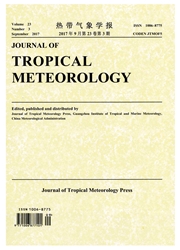

 中文摘要:
中文摘要:
自上世纪80年代中期发现南极"臭氧洞"及平流臭氧层耗竭现象以来,有关UV-B影响生物和生态系统的研究逐渐成为气候变化研究关注的热点之一.过去40年里,针对UV-B增加对作物的潜在影响,研究者们展开了大量深入细致的研究.研究发现,自然和增强的UV-B降低作物产量的幅度一般不会超过20%,这种有限的产量损失反映了作物自身特有的防御UV-B损伤的机制.本文从植(作)物对UV-B辐射增强表现的4个层次,即植物形态、 生理、 生物化学和分子水平变化的光形态建成和胁迫响应,对作物防御UV-B辐射伤害的可能机制予以综述,并提出了今后需要注重研究的几个方向,旨为抗UV-B育种和农艺措施制定提供具有现实价值的信息和理论依据.参117.
 英文摘要:
英文摘要:
Since the discovery of the Antarctic ' ozone hole' and general depletion of the stratospheric ozone layer in the mid - 1980 s, significant interest in documenting the effects of UV - B radiation (280 nm -315 nm) on organisms and ecosystems has been one of the most important concern of global change. A substantial number of studies have been intensively conducted over the last several decades to assess the potential impacts of long - term increases in ultraviolet - B radiation on crop plants, and have shown a diverse range of re- sponses. Direct effects of natural or enhanced levels of UV - B radiation on plant yield have been detected to be modest, with growth reductions generally not exceeding 20% under field conditions. This limited impact reflects the activity of protective mechanisms in crop plants. This article summarizes changes at the physiological, morphological, biochemical and molecular levels, and proposes several future avenues with an aim to better understand the mechanisms whereby solar UV - B radiation boosts the expression of natural plant defenses. It could provide important elements for biotechnological, traditional crop breeding and viable cropping strategies programs.
 同期刊论文项目
同期刊论文项目
 同项目期刊论文
同项目期刊论文
 期刊信息
期刊信息
